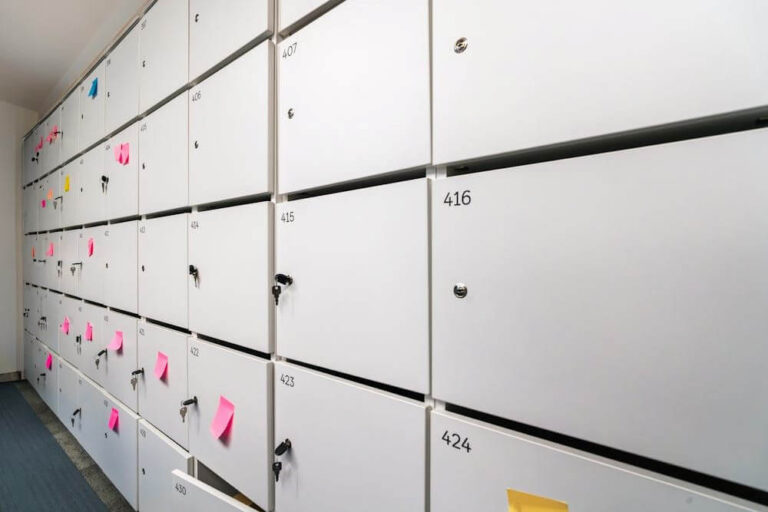Workplace efficiency is often tied to how well a company manages its resources, including its physical space. One often overlooked resource in many offices is the workplace locker. Investing in reliable storage solutions like lockers enhances organization and streamlines daily operations. This article explores how workplace lockers can significantly improve office workflow through various means, addressing the needs of both employees and management.
The Importance of Organization
Cluttered workspaces are known to hinder productivity and creativity. An organized environment allows employees to focus on their tasks without being distracted by the chaos around them. When companies provide secure and efficient workplace lockers, they promote a tidier workspace and signal to employees that their belongings are valued and safeguarded. By equipping employees with access to storage, they can keep their desks free of personal items that might otherwise hinder their performance.
Effective organization through lockers can contribute to better time management as well. Employees spend less time searching for misplaced items and are less likely to dig through their desks to find crucial tools. Instead, they can quickly access their lockers to retrieve personal or work essentials, keeping the workflow seamless. A commitment to the organization trickles down to increased productivity and satisfaction across the team.
Enhancing Employee Experience
Workplace locker systems can also dramatically improve the employee experience. Offering convenient storage solutions fosters a sense of trust and support, making employees feel more at home in their workspace. This comfort can lead to increased job satisfaction and, subsequently, enhanced employee retention. Feedback from teams suggests that personal storage leads to improved morale.
Employees are more likely to feel empowered and motivated when provided with a defined space for their belongings. This sense of ownership can lead to a deeper connection with the workplace and greater commitment to their roles. An environment that prioritizes their needs creates a culture of engagement, all of which leads to better performance.
Safety and Security Considerations
Safety is paramount in any organization, and structured storage plays a pivotal role in creating a secure working environment. Workplace lockers protect employee possessions not just from theft but also from damage. Personal belongings such as electronics, documents, and personal items benefit from the added security that lockers provide. Knowing their items are safe allows team members to concentrate on their work without worrying about potential security breaches.
Many modern locker solutions are designed with advanced locking systems that enhance security further. Electronic keypads and biometric readers are increasingly common, enabling a higher level of access control which traditional methods may lack. Such features reassess how businesses view security within their workspace while ensuring compliance with industry standards.
Encouraging a Culture of Responsibility
When implemented correctly, workplace lockers can encourage responsibility among employees. With dedicated storage space, individuals learn to manage their belongings and maintain their environment. This responsibility can extend to other areas of their professional lives, promoting a culture of accountability within the team. The organization and care of personal belongings can breed a greater understanding of organizational values.
Programs centered around responsible locker use can be initiated to educate employees on the best practices for managing shared spaces. This instills a sense of community, as team members are encouraged to care not only for their belongings but also for shared areas. As accountability within the workspace matures, it positively impacts the overall work dynamic.
Improving Aesthetics and Space Utilization
Workplace aesthetics can have a profound influence on employee morale and creativity. A clean and organized workspace is generally more inviting, and lockers can enhance this aspect significantly. By utilizing lockers effectively, companies can create more open spaces that promote collaboration. Excess items lying around can diminish the visual appeal of an office, but the inclusion of elegant locker systems can change that.
Lockers can be customized to fit various office designs, ensuring that they not only function well but also enhance the overall workspace aesthetic. By considering design elements that align with the corporate identity, companies can create an environment where employees feel inspired. This is especially crucial in modern open-plan offices where maintaining a positive atmosphere while encouraging interaction is a delicate balance.
Cost-Effectiveness
Investing in workplace lockers is also a strategic financial decision. Initial costs may seem significant, but the long-term benefits often far outweigh the expenditure. Increased productivity, enhanced employee retention, and improved morale lead to lower recruiting and training costs, offering a durable return on investment over time.
The maintenance of workplace lockers is generally low, especially when opting for durable materials designed for high traffic. Businesses save on frequent replacements or repairs associated with disorganized office environments. In this way, investing in tailored storage solutions proves to be a financially sound choice that pays dividends over time.
Workplace lockers represent a benchmark for modern organizational practices and signify a company’s commitment to its workforce. Implementing lockers requires thoughtful planning and attention to detail to pair them with existing office layouts and team dynamics. Investing in workplace lockers unlocks numerous benefits, allowing for increased organization, security, responsibility, and employee satisfaction that collectively transform office workflow.


